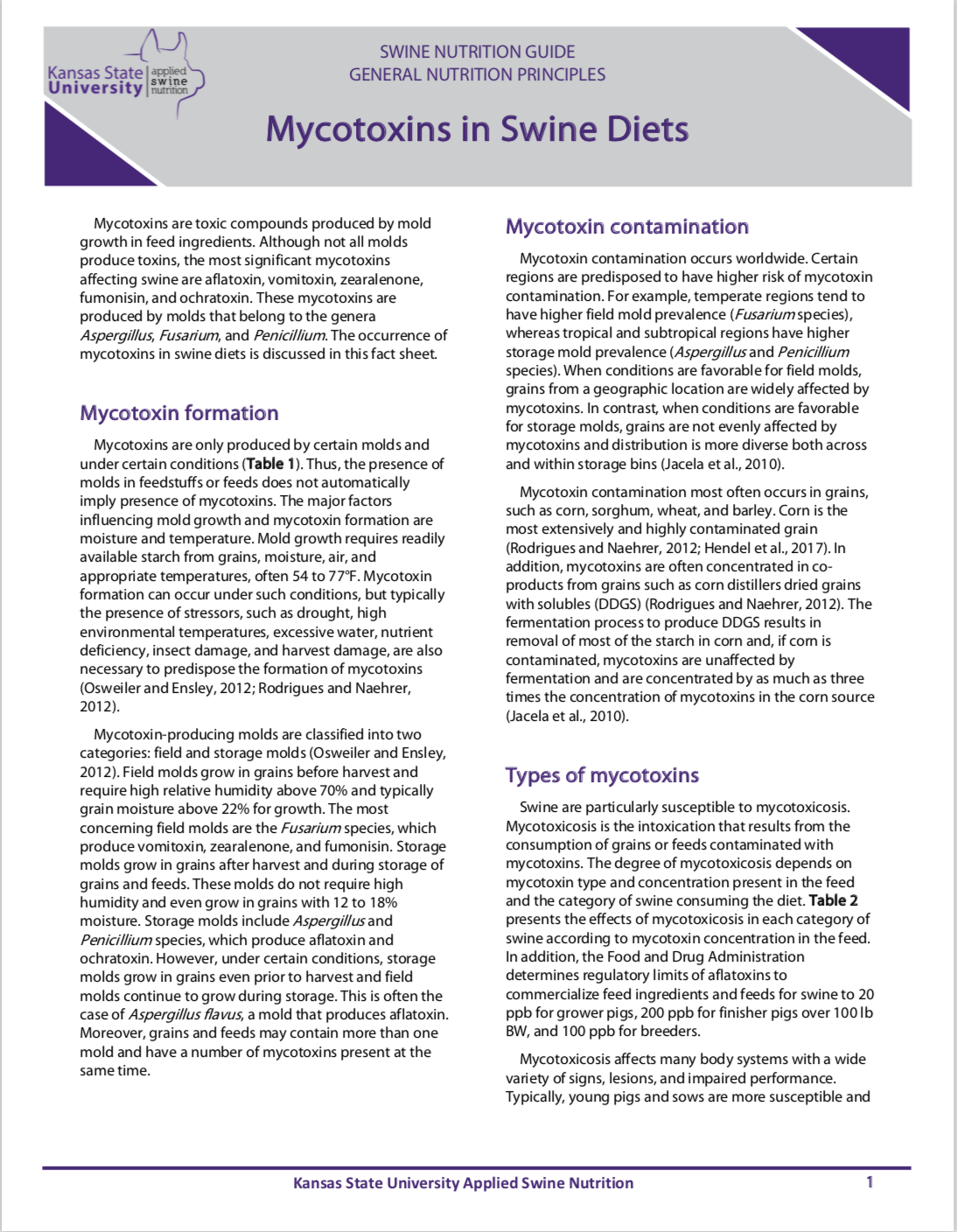Mycotoxin analysis
Sampling grain or feed for mycotoxins analysis is critical for mycotoxin detection. Mycotoxins are not evenly distributed in grains or feeds. Rather, mycotoxins are often found at high concentrations in ‘hot spots’, but at the same time may not be found at detectable amounts in other locations. Thus, the ideal sample should be representative of all of the grain or feed. Importantly, the presence or absence of visible mold growth is not a reliable indicator of mycotoxin contamination and should not be used as a sampling criterion (Carlson and Ensley, 2003b).
For bulk grains or feeds, samples should be collected from at least 10 evenly-spaced locations in the bulk carrier to be representative of the entire load of grains or feeds. For sampling during loading or unloading of bulk grains or feeds, samples should be collected at least 10 times at regular intervals. For sampling from bags of grains or feeds, at least 10 bags should be collected from the lot, with random selection of bags at varying locations in the lot. For sampling from feeders, at least 6 feeders should be collected with a probe or 9 feeders by hand grabbing. In either sampling procedure, sample size should be at least 1 lb and preferentially 2 lb (AAFCO, 2017). Samples should be combined in a composite sample.
Samples should be sent for analysis in paper bags rather than plastic bags to prevent condensation of moisture and further proliferation of mold growth (AAFCO, 2017). Suggested laboratories performing mycotoxin analyses of complete feeds and feed ingredients are North Dakota State University Veterinary Diagnostic Laboratory (www.vdl.ndsu.edu) and Romer Labs, Inc.(www.romerlabs.com).
